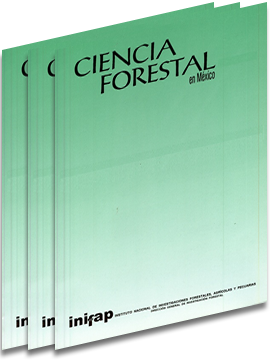ÁREAS POTENCIALES PARA EL CULTIVO DE PITAHAYA (Hylocereus undatus (Haw.) Britt. & Rose) EN EL SUR DEL ESTADO DE MÉXICO
Keywords:
Potential areas, Hylocereus undatus, modeling, pitahaya, productive potential, low income peasantsAbstract
The fow income peasants of Estado de México have few production alternatives as their lands have very low fertility and at such severe slopes that make profitable crops very difficult to grow. Pitahaya (Hy/ocereus undatus) is a plant with adaptability potential to the difficult ecological conditions that prevail ln marginal zones of the state, in addition to its high profitability and growning demands from the national and international markets due to its delicious fruit and its price. The present study was carried out in the southern part of the state; methodology included the modeling of climate and soil requirements of the specie by means of a Geographical lnformation System (GIS). Through the overlapping of the different environmental variable covers the areas with such dernands were defined far the cultivation of the pitahaya. The land with good potential for the specie (156,816 ha) is located in the Rural Distrlcts of Valle de Bravo, Tejupilco and Coatepec Harinas, where warms weather prevails and slopes are over 12% in most of its territory.
Downloads
Downloads
Published
How to Cite
Issue
Section
License
The authors who publish in Revista Mexicana de Ciencias Forestales accept the following conditions:
In accordance with copyright laws, Revista Mexicana de Ciencias Forestales recognizes and respects the authors’ moral right and ownership of property rights which will be transferred to the journal for dissemination in open access.
All the texts published by Revista Mexicana de Ciencias Forestales –with no exception– are distributed under a Creative Commons License Attribution-NonCommercial 4.0 International (CC BY-NC 4.0), which allows third parties to use the publication as long as the work’s authorship and its first publication in this journal are mentioned
The author(s) can enter into independent and additional contractual agreements for the nonexclusive distribution of the version of the article published in Revista Mexicana de Ciencias Forestales (for example, include it into an institutional repository or publish it in a book) as long as it is clearly and explicitly indicated that the work was published for the first time in Revista Mexicana de Ciencias Forestales.
For all the above, the authors shall send the form of Letter-transfer of Property Rights for the first publication duly filled in and signed by the author(s). This form must be sent as a PDF file to: ciencia.forestal2@inifap.gob.mx
This work is licensed under a Creative Commons Attribution-Noncommercial 4.0 International license.


